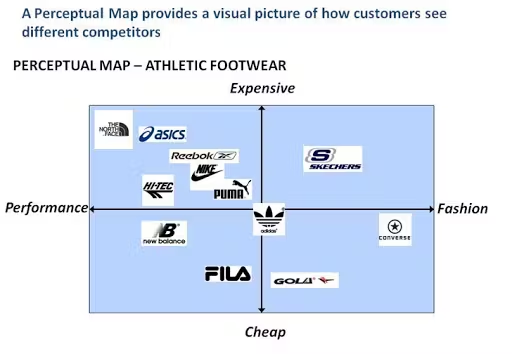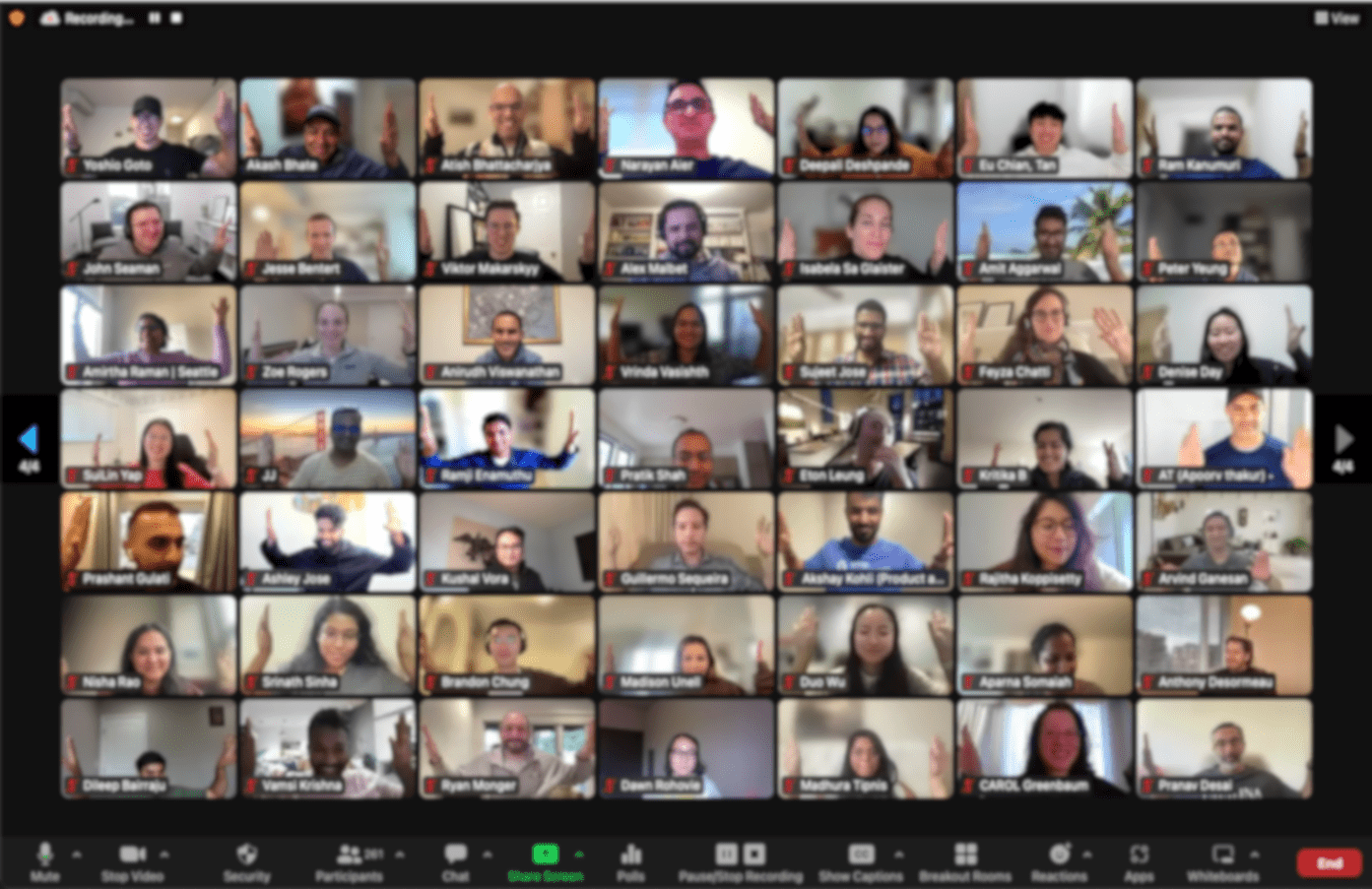Many companies have no idea why customers keep buying or stop buying their products. A perceptual map (also known as a positioning map) can give you insights into your customers' perception of your products. It lets you see where you sit in the market from the consumers' perspective. It can also help you understand where your product/services fit within the market.
But how do you create one?
In this guide, we’ll discuss product positioning maps in detail, including their importance and how to create one.

No matter what marketing strategy you use, you'll need to understand how potential customers would compare your products to other products on the market. A conceptual product positioning map helps you precisely with that. But what’s a product positioning map?
To define a product positioning map, we first need to understand what product positioning is.
What is Product Positioning?
Positioning defines what makes your product unique compared with the competition. Think of it as a data-driven exercise that defines where your products and/or services fit in the marketplace and why they are better than the alternative.
Product positioning presents your product's value proposition to a particular audience. Positioning is best achieved with the help of a product positioning map.
What is a Product Positioning Map?
A product positioning map is a graphical representation of how your products compare with the competition. It's simply a two-dimensional chart with a vertical and horizontal axis that represents defined attributes.
These attributes could be anything from price to features, size, reliability, safety, performance, packaging, or any other positioning comparison criteria.
That said, a perceptual product positioning map allows you to plot your product positioning against key competitors, using key characteristics that matter most to consumers.
Why Should You Create a Product Positioning Map?
A perceptual product positioning map is a critical asset for your brand for many reasons.
It helps support your positioning strategy and plays a significant role in helping you achieve your desired goals. It will help you carve a niche, exploit it, and create a killer product that will give you an edge over the competition.
A perceptual map can help you identify gaps in the market and plan your strategy to target a specific market segment.
When accurately drawn, a positioning map can improve your knowledge about the market and the competition. Better still, it can provide new insights to help you understand market trends, consumer behavior, and gaps in the market.
Mapping Your Product Positioning
As mentioned, a product positioning map is a diagram that helps you compare your product or services to the competition and identify opportunities for new products in the market.
Essentially, the map plots two key product attributes (benefits) on the horizontal and vertical axis of a graph. These attributes are based on what consumers consider most important in a product and may include things like price, features, or any other comparison criteria.

Steps to Create a Product Positioning Map
To create a product positioning map, simply follow these five steps.
1. Define Your Market and Target Personas
The first step in creating a product positioning map is to define your target market. To define your target market, you'll first need to identify customer needs.
Customer needs are what consumers want when interacting with a business or searching for products or services. You need to ensure your products can meet these needs to stay relevant and competitive in the market.
So, how do you identify customer needs? There are many strategies you can employ to ensure your products aren't off the mark. These may include
We'll briefly go over these methods.
Keyword Research
93% of the time, online sessions begin by searching keywords on a search engine. And that includes searching for features customers want on products.
For example, gamers looking for gaming laptops often look for models with a powerful GPU and more RAM. Having such features on your products can increase your brand's visibility online through keyword optimization.
Keyword research is not only good for SEO; it can also provide insights into your customers' needs. Identifying what customers are searching for can give you insights into what they want in your products. This can easily be achieved with the help of keyword research tools, such as AHREF.
Social Listening
Social media listening is the practice of monitoring social platforms for mentions of your brand, competitors, and related keywords.
The goal of social media listening is to listen to relevant conversations on social channels and gain insights into what people are saying about your products. It can also help you figure out what customers want and where your brand stands in their minds.
Let's say you're a phone manufacturer and recently launched a new phone set to compete with the likes of Samsung Galaxy and iPhones.
To determine consumers' perception of your new product, you can start a hashtag on Twitter with the product's name and monitor users comments.
This way, you'll get to "listen" to what people are saying about your new product and gain insights into what customers like and dislike about the product. You can then work on this feedback to improve your product offerings.
Focus Groups
A focus group is a market research method that involves interviewing 6 – 10 people who are representative of your target audience.
The interview may be about a product, service, concept, or campaign you intend to launch. A trained moderator leads a 30 – 90 minutes discussion with the group in an interactive interview.
Addressing your prospective customers directly in an interactive interview can bring a whole new perspective into what customers want in your products regarding features, performance, price, etc. You can even grill them about things they hate about your products.
Customer Needs Analysis Surveys
Surveys are another great way to figure out customers' needs.
Your customer needs analysis survey should ask questions about your business and competitors as well as what customers would want in your products. Done right, a customer needs analysis survey might be the only thing you need to launch a killer product or improve your offerings.
2. Select Your Product Characteristics to Compare
Selecting attributes to compare is a critical step for any conceptual map.
Attributes that matter to your target audience give the map its true meaning. The target audience and your customers will use these attributes to compare your products with the competition. Here are some typical product attributes you can include in your map.
Functionality and price
Quality and price
Reliability and price
Safety and price
Price and performance
Most customers are usually sensitive to price, and that's why price is often used against other attributes. However, it doesn't have to be included.
Depending on your product or services, you could use attributes that matter to customers more than the price. For example, the price might not make much difference if you're targeting high-net-worth individuals. The product's value and functionality/reliability will matter the most.
But if you've established that your target audience consists of low-income earners, the price would be your key selling point. In either case, make sure to choose attributes that are relevant to your target audience.

3. Identify Existing Products in the Market
Next, compile a list of alternative products on the market based on the attributes you chose in the previous step. In other words, identify competing products.
Compile a list of seven to ten products to plot on the perceptual map along with your product. To create this list, you can conduct surveys and ask customers to name alternative products they consider worthy competitors.
Alternatively, you could ask your focus group participants to name a few competing products that are making impact in your niche. A simple Google search can also populate a list of competitors you can check out.
4. Plot Each Company on the Map
Once you've identified competing brands, you can create a perceptual map and plot the position of each company on the map. A good product positioning map should clearly depict your product's position in relation to your competitors.
5. Share Your Map
Lastly, share your map with key stakeholders to get their opinion about customers' perceptions of your products. This is a great way to engage with the stakeholders and discuss where the product currently is and where it needs to be.
Based on this, you might want to consider altering your marketing strategy to steer the product's position toward your goals.
Example of a Product Positioning Map
Here's a product positioning map comparing different brands of footwear.

The map shows the correlation between the price and performance of sports shoes from various brands. As you can see on the map, the most expensive and functional brands are The North Face, Asics, Nike, Reebok, and Puma.
Sketchers footwear is positioned as expensive but also more fashionable than the North Face, Asics, and others. New Balance and Fila are positioned as cheaper but also high-performance footwear. Gola and Converse are stylish and more affordable options.

Wrapping Up
With a product perceptual map, you can gain valuable insights into where your product fits in the market, compare it to other offers, and identify market trends.
A perceptual product positioning map will help you see things from the customers' perspective, so you can improve your products and achieve a competitive edge. It's worth noting that perceptual mapping is a dynamic process.
As trends change and new products/innovations are introduced, you may need to change your map and improve your products to stay relevant. Thus, you need to always keep abreast of new developments in the market and be ready to adapt.
Want to leverage product positioning in your marketing strategy? Maven has a premium selection of marketing strategy courses that will set you up for success.
Get in touch with us to learn more about these courses and how Maven can help you master the art of product positioning.









